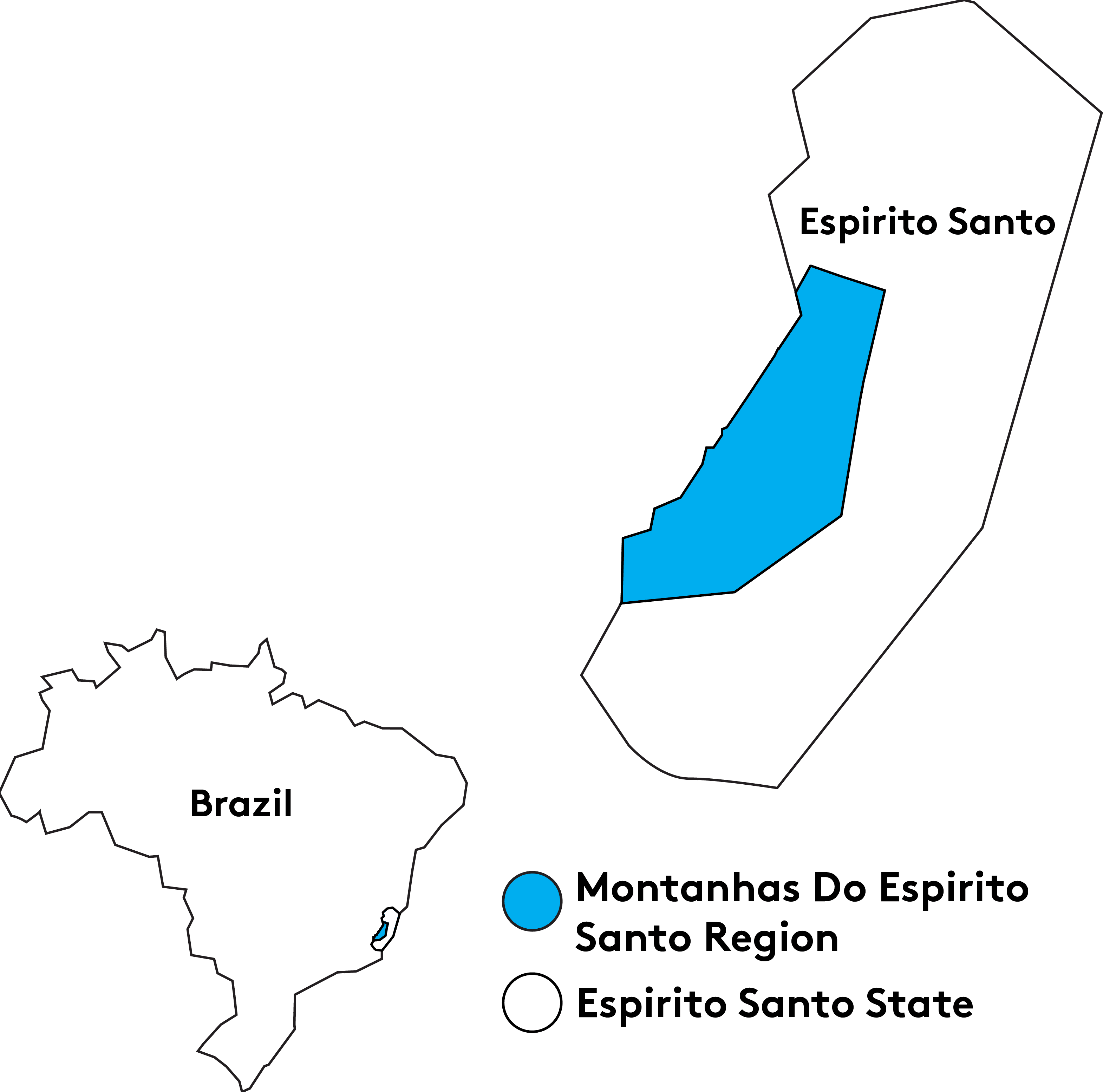The possibility of earning higher prices prompted Valdir Mansk to invest in the production of specialty coffee in 2010. Today, coffees from Sitio Alto Santa Joana, grow on nearly 12 hectares almost halfway between Alfonso Claudio and Santa Maria de Jetibá.
Valdir’s first quality investment was the acquisition of a small depulper. The coffee grower, of Pomeranian (Geman-Polish) descent, reveals that his secrets for producing quality coffee include harvesting on only ripe cherries and in monitoring the coffee drying on the patio so that beans do not over ferment.
Another detail that makes all the difference is the shade provided by the cedar trees planted on the property. Valdir’s two teenage sons assist him with work on the farm and maintaining a business perspective on coffee production.
Learn more about the Espirito Santo region of Brazil.
